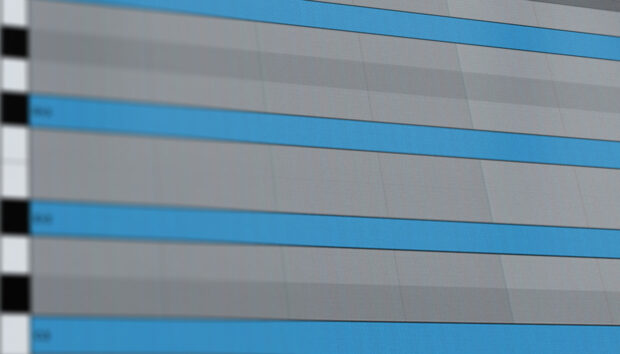
Brainworx Audio is a company well regarded for its high-end audio software, often modelled on classic outboard hardware, and done so with incredible attention to detail.
Its many award-winning plug-ins range from the bx_townhouse, modelled on a buss compressor used at the famous London-based studio, to faithful recreations of SSL 4000 E and G Series channels strips, all approved by the iconic UK mixer company. So when Brainworx announced its first software synth, the bx_oberhausen – modelled on a legendary analog classic, the clue of which is in the name – you can be almost assured of its sonic excellence. And as it is Brainworx’s first plug-in with full NKS support, meaning that you can control many of its main parameters with Native hardware, we decided to take a closer look.
bx_oberhausen features two VCOs as its source core ingredients which are selectable between saw and pulse waveforms. FM synthesis can also be employed where the frequency of VCO2 is modulated by VCO1. There are two envelopes, a comprehensive VCF filter section, two LFOs and lots – and we mean lots – of modulation options. One wonderful addition is a selection of effects that can be shown across the top of the GUI and reordered in any order you like. However, before we get too deep into signal flow, we should go right down to the component level of the synth. Here, Brainworx has employed its Tolerance Modeling Technology (TMT) to accurately replicate individual components of the synth, including the slight variations that you would expect to hear from the original analog hardware. This level of detail helps convey a more unpredictable quality, giving the plug-in more of the subtle nuance and character of the original synth.
As far as signal flow goes, on a basic level — and if you are in any way familiar with subtractive analogue synthesis — you will be at home here. Employ one or both oscillators, modulate their frequency or pulse width values with the envelopes or LFOs, and add a lovely stereo breadth by way of the Pulse Width/Spread controls. The VCF filter section has similar modulation options and you can select between low-, high and band pass filter options, all with a variable control to flow smoothly between each. There’s also a mid-side setting (VCF M/S) that allows you to spread differently-filtered parts of the sound to the mid or side, adding a lot more sonic flexibility.
An extensive modulation matrix at the top of the synth offers nine additional modulation sets. It means that even parameters like the VCF type can become destinations to be controlled by way of source modulators like the mod wheel, pitch bend or aftertouch. Also worthy of note are the five different modulating curvature settings you get for each modulating set, so that different modulation timing variations can be introduced.
The Tolerance Modeling Technology (TMT) technology really comes into its own when you start playing with arpeggiations by way of the well-featured Arpeggiation section, or engaging the Unison mode where you can stack voice upon voice. TMT brings in some lovely timing and pitch variations, helping to create huge walls of sound as you stack voices together, giving bx_oberhausen a great and individual personality, unheard in other emulations of the same synth.

As to the sounds, all 300 presets are spread over 16 categories, from Brass to Soundscapes, with sub categories included so you can home in on a preset (or use the Search tool instead). The preset management system also integrates well with NKS-enabled products. Essentially, sounds vary from pretty realistic emulations of real instruments (flutes and string sounds being particularly good) to vast ambient pads, incredibly rich atmospheres, huge, squelchy basses and lovely textured leads. There are some absolute classics here that you’ll recognise from many an 80s hit but some of the aforementioned stacks can take your breath away, and the more dynamic sounds can twist and turn into all sorts of sonic directions. Of course, the welcome hands-on tweakage brings in even more movement when you want it, and the NKS assignments will certainly add to the experience in this regard. Having hardware control over these incredible sounds really does give you the feeling that you are using the real synth, with intricate tweaks or dramatic sweeps available at every turn.
Many of the presets sounds are brought to life with the range of quality effects, the order of which you can arrange on screen, and some of these are cut down (or less cut down) versions of separate effects as sold by Brainworx. Lush reverbs and dancing delays sit side by side with chorus and flange boxes, each with main parameters available to edit. Arranging these in different orders will not only radically change a preset’s sound but will also provide an education in signal processing. Either way, there are plenty of effects to lift the sound of bx_oberhausen way away from its original tones, should you so wish.
And that is the most beautiful side of bx_oberhausen: that it can be used as an extraordinary emulation of the original synth, but then with the extensive modulations, additional effects and polyphony, you can take the results well and truly into the 21st century. It’s a classic synth but beautifully relevant to the here and now, and partnered with NKS, you’ll be tweaking and twisting its sound just like you would the original vintage hardware.















